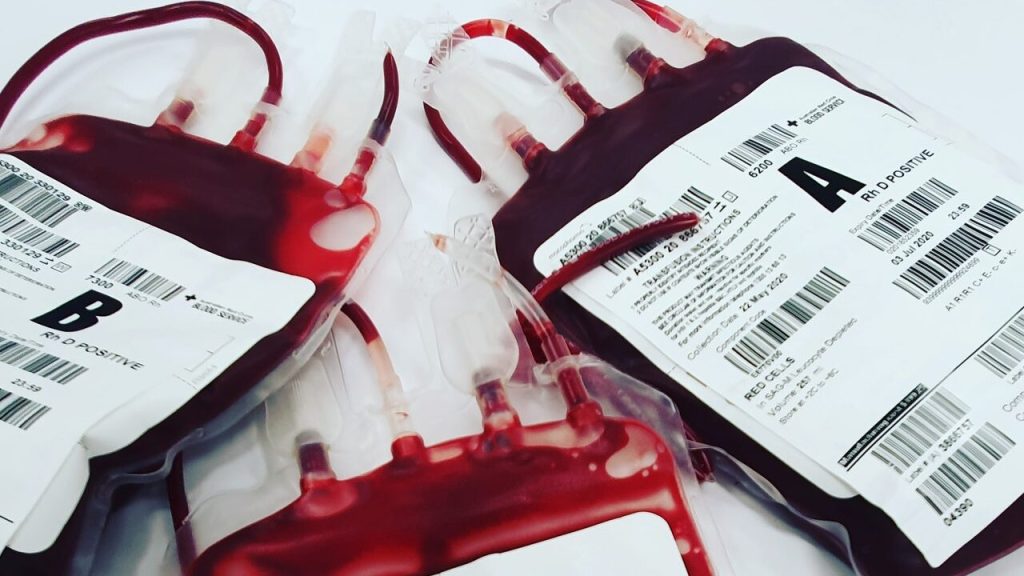
Studies over the past several years have shown that infusions of young blood seem to produce a rejuvenating effect when infused into older bodies. Ageing hearts beat stronger, muscles become stronger, and thinking becomes sharper.
While some scientists have considered trying to replicate this effect with a pill, others have focused on rejuvenating the haematopoietic stem cells that actually make the blood – something which may be possible, based on recent findings from a study published in Nature Cell Biology.
“An ageing blood system, because it’s a vector for a lot of proteins, cytokines, and cells, has a lot of bad consequences for the organism,” says Emmanuelle Passegué, PhD, director of the Columbia Stem Cell Initiative, who’s been studying how blood changes with age. “A 70-year-old with a 40-year-old blood system could have a longer healthspan, if not a longer lifespan.”
Passegué, with her graduate student Carl Mitchell, found that an anti-inflammatory drug, already approved for use in rheumatoid arthritis, can turn back time in mice and reverse some of the effects of age on the hematopoietic system.
“These results indicate that such strategies hold promise for maintaining healthier blood production in the elderly,” Mitchell says.
Returning blood stem cells to a younger state
The researchers only identified the drug after a investigation of stem cells for blood and the niches where they reside in the centre of the bones.
All blood cells in the body are created by a small number of stem cells that reside in bone marrow. Over time, these haematopoietic stem cells start to change, producing fewer red blood cells (leading to anaemia) and fewer immune cells (which raises the risk of infection and impedes vaccination efforts), and they have trouble maintaining the integrity of their genomes (which can lead to blood cancers).
In a 2021 Journal of Experimental Medicine paper, Passegué and her team first tried to rejuvenate old haematopoietic stem cells in mice, with exercise or a calorie-restricted diet, both generally thought to slow the ageing process. Both failed, as did transplanting old stem cells into young bone marrow. Even young blood had no effect on rejuvenating old blood stem cells.
Mitchell and Passegué then took a closer look at the stem cells’ environment, the bone marrow. “Blood stem cells live in a niche; we thought what happens in this specialised local environment could be a big part of the problem,” Mitchell says.
With techniques developed in the Passegué lab that enable detailed investigation of the bone marrow milieu, the researchers found that the ageing niche is deteriorating and overwhelmed with inflammation, leading to dysfunction in the blood stem cells.
One inflammatory signal released from the damaged bone marrow niche, IL-1B, was critical in driving these ageing features, and blocking it with the drug, anakinra, remarkably returned the blood stem cells to a younger, healthier state.
Even more youthful effects on both the niche and the blood system occurred when IL-1B was prevented from exerting its inflammatory effects throughout the animal’s life.
The researchers are now trying to learn if the same processes are active in humans and if rejuvenating the stem cell niche earlier in life, in middle age, would be a more effective strategy.
Meanwhile, “treating elderly patients with anti-inflammatory drugs blocking IL-1B function should help with maintaining healthier blood production,” Passegué says, and she hopes the finding will lead to clinical testing.
“We know that bone tissue begins to degrade when people are in their 50s. What happens in middle age? Why does the niche fail first?” Passegué says. “Only by having a deep molecular understanding will it be possible to identify approaches that can truly delay ageing.”
Many societies have added more than 30 years to life expectancy in the past century. “Now it is imperative to conduct the science to determine how to create health and well-being across the full length of those lives,” says Linda Fried, MD, MPH, dean of the Mailman School of Public Health at Columbia University and director of the Butler Columbia Aging Center. “This must include research to understand the mechanisms of normal aging and how to fully develop the huge opportunities to create healthy longevity for all.”

